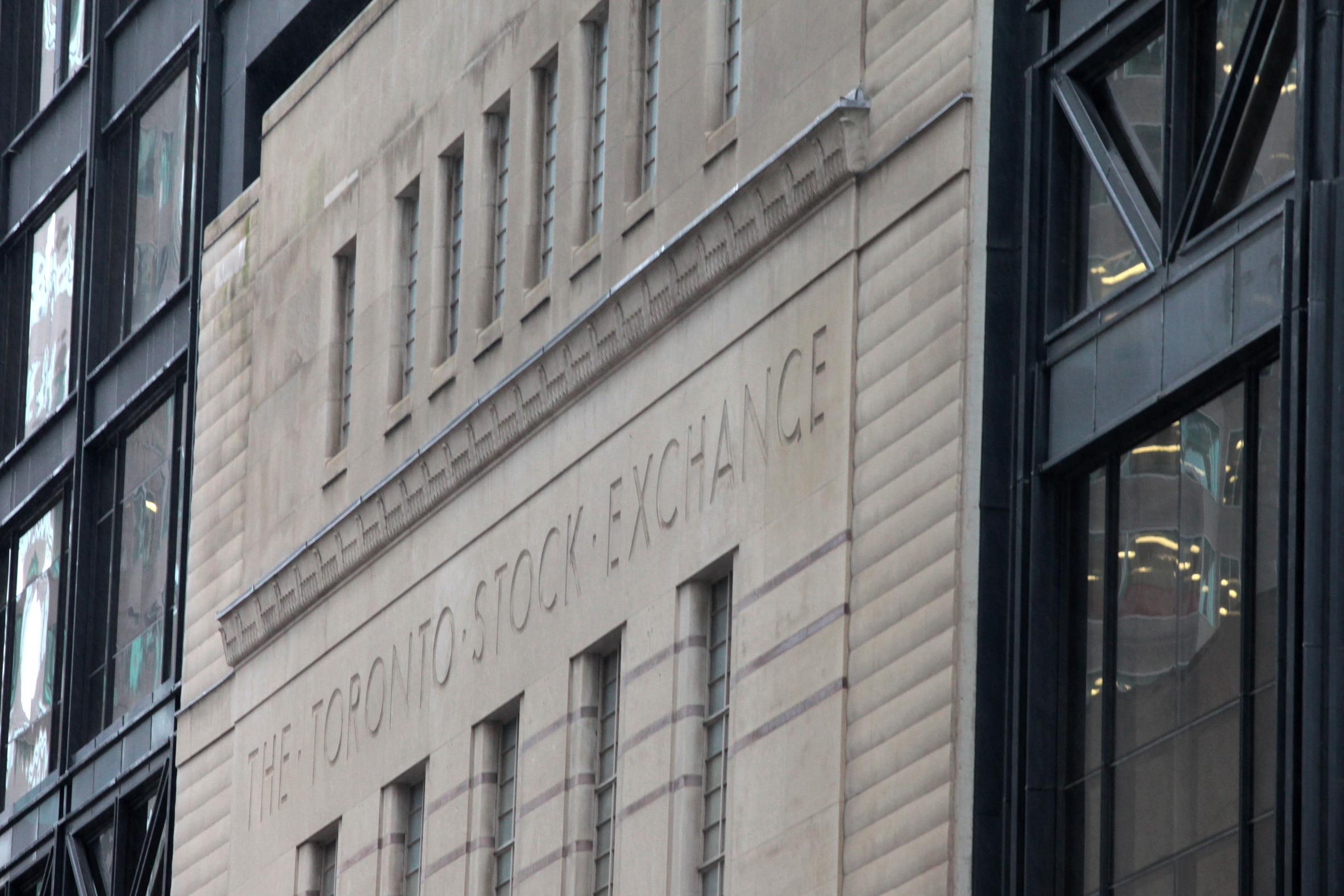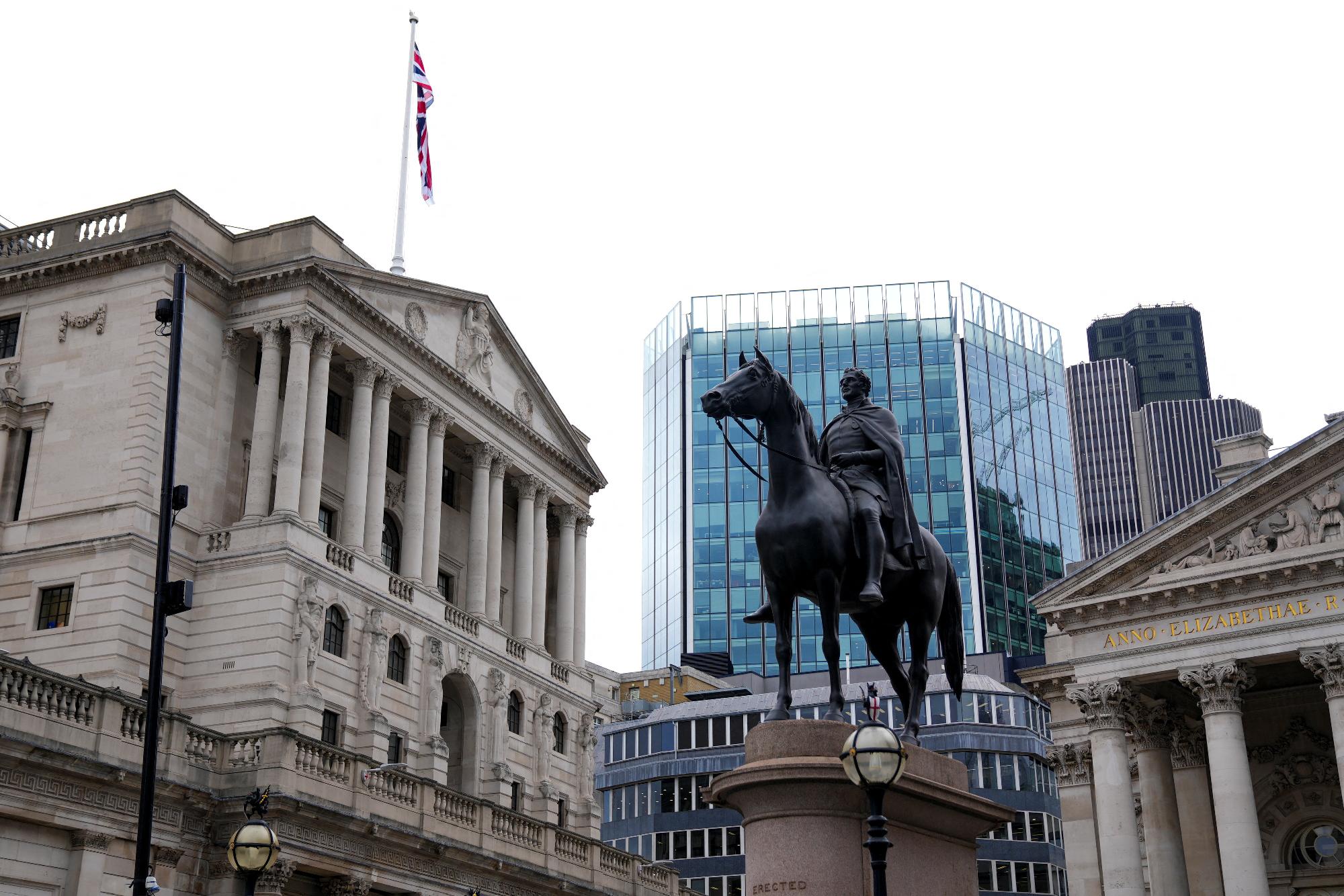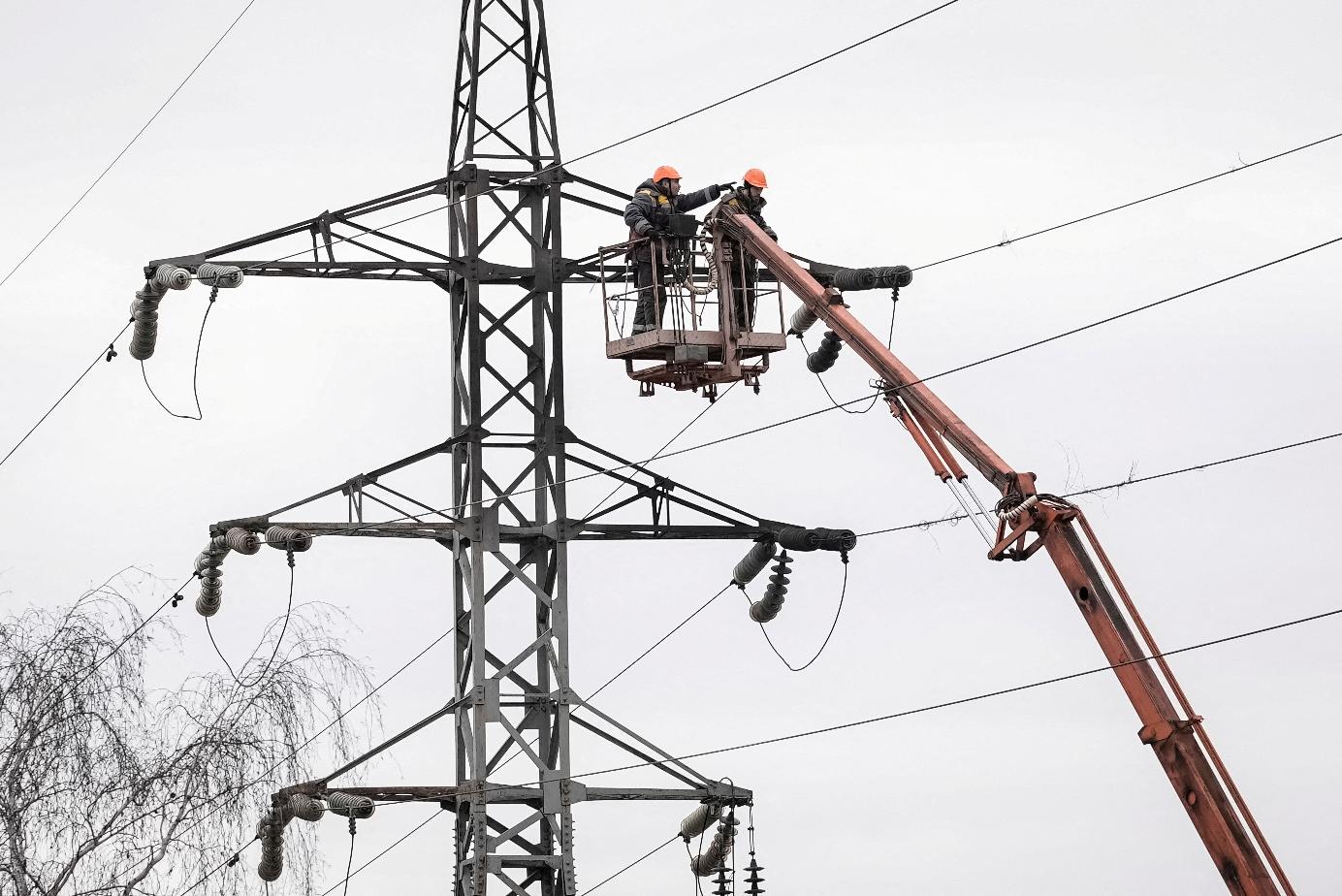
2024-09-19 11:57
PRAGUE, Sept 19 (Reuters) - The Czech finance ministry will provide 30 billion crowns ($1.34 billion) to tackle flood damage under an amendment of its 2024 budget and will allocate a further 10 billion crowns next year for the same purpose, news agency CTK reported on Thursday. The worst floods to hit central Europe in at least two decades have left a trail of destruction across central Europe, killing at least 24 people. In the Czech Republic, where the death toll now stands at five people, water levels are receding. The Czech government had planned a 252 billion crown central budget deficit this year, but that will now rise to 282 billion crowns due to the costs of tackling the floods, CTK cited Finance Minister Zbynek Stanjura as saying. Before the expected change, the ministry had forecast an overall fiscal gap, which takes regional governments and other funds into account, of 2.5% of gross domestic product (GDP) in 2024, below European Union limits. The additional funds are equal to about 0.38% of GDP. Another 10 billion crowns will be allocated in the 2025 budget, CTK said, and the planned deficit will rise to 240 billion crowns, from 230 billion. "Now we are all straining to repair the damage caused by the devastating floods," Prime Minister Petr Fiala said on X on Thursday. "Immediately afterwards, massive investment will be needed to rebuild the affected area, and the government will make CZK 40 billion available for this (over two years)." ($1 = 22.4600 Czech crowns) Sign up here. https://www.reuters.com/world/europe/czechs-provide-13-bln-flood-damage-2024-budget-amendment-2024-09-19/

2024-09-19 11:49
TSX ends up 1.2% at 23,866.27 Technology advances 3% Energy adds 1.9% as oil settles 1.5% higher TD Bank names new CEO; stock rises 2.4% Sept 19 (Reuters) - Canada's main stock index climbed to a record high on Thursday, led by technology and commodity-linked stocks, as investors bet that the Federal Reserve's outsized interest rate cut could spur a shift from cash into riskier assets globally. The Toronto Stock Exchange's S&P/TSX composite index (.GSPTSE) , opens new tab ended up 273.67 points, or 1.2%, at 23,866.27, eclipsing Monday's all-time closing high. Wall Street also rallied after the Fed kicked off its easing cycle on Wednesday with a half-percentage-point reduction in rates, rather than a quarter-percentage-point move. "Traders seem to have decided to take the rate cut news as positive for liquidity, overshadowing concerns that rate cuts could be a sign of a weakening economy," Colin Cieszynski, chief market strategist at SIA Wealth Management, said in a note. Lower U.S. interest rates reduce the cost of borrowing U.S. dollars. The Fed's move could also encourage other central banks, such as the Bank of Canada, to cut rates at a faster pace, analysts say. The technology sector rose 3%, helped by a gain of 5.6% for electronic equipment company Celestica Inc (CLS.TO) , opens new tab. Energy was up 1.9% as the price of oil settled 1.5% higher at $71.95 a barrel. Gold and copper prices also rose, leading to gains for metal mining stocks. The materials group, which includes metal miners and fertilizer companies, added 1.6%. TD Bank CEO Bharat Masrani will retire next year and hand over the job to the head of its Canadian banking unit Ray Chun, as Canada's second-biggest lender braces for expected U.S. fines for weakness in its anti-money laundering protocols. Shares of TD (TD.TO) , opens new tab rose 2.4%, while the financials sector ended 1.3% higher. Sign up here. https://www.reuters.com/markets/tsx-futures-jump-feds-big-rate-cut-aids-us-soft-landing-hopes-2024-09-19/

2024-09-19 11:48
LONDON, Sept 19 (Reuters) - The Bank of England held interest rates at 5.0% on Thursday and voted to run down its stock of British government bonds by another 100 billion pounds ($133 billion) over the coming 12 months, a move that could weigh on the government's finances. The Monetary Policy Committee voted 8-1 to keep rates on hold. Only external member Swati Dhingra voted for a further quarter-point rate cut after the BoE last month delivered its first reduction to borrowing costs since 2020. Economists polled by Reuters had forecast a 7-2 vote to keep rates on hold after last month's tight 5-4 decision to cut rates from their previous 16-year high. Sterling jumped above $1.33 on the back of the decision, the highest the currency has been since March 2022, and investors scaled back bets on further cuts in Bank Rate for the remainder of the year. On Wednesday, the U.S. Federal Reserve cut rates by 0.5 percentage points - a larger-than-expected move that reflected the Fed's confidence that inflation pressures were cooling. The BoE struck a more cautious tone. Governor Andrew Bailey said cooling inflation pressure meant the BoE should be able to cut rates gradually over the months ahead. "But it's vital that inflation stays low, so we need to be careful not to cut too fast or by too much," he said in a statement. Investors think the British central bank will cut rates at a slower rate than the Fed over the next year, citing more persistent inflation pressure. The BoE said inflation was likely to rise to around 2.5% by the year's end from 2.2% in the most recent data, compared with a previous forecast of around 2.75%. Lower oil prices contributed to the downgrade. "The decision to keep base rates on hold aligns with our long-held view that the Bank will take a cautious approach to the start of the cutting cycle," said Dean Turner, chief European economist at UBS Global Wealth Management. After Thursday's announcement, investors no longer fully priced two rate cuts by the end of 2024, as they had done earlier in the day. There was now a 2-in-3 chance of a cut in November which was previously seen as a foregone conclusion. Financial markets now expect the BoE to cut rates in quarter-point moves four or five times by June. By contrast, they see around seven such cuts in the U.S., even after its outsized move on Wednesday. QT CONTINUES The MPC voted 9-0 to maintain the pace of its quantitative tightening programme in the 12 months starting in October 2024. QT represents the sale of hundreds of billions of pounds of British government bonds purchased in past attempts to stimulate the economy, by letting these gilts mature but also through active sales. The 100 billion-pound pace of QT over the coming 12 months will be the same as over the past year, in line with most market expectations. Some investors had predicted an acceleration of QT, as the BoE holds 87 billion pounds of gilts that are due to mature naturally over the next year, leaving just 13 billion pounds for active gilt sales at the current pace. Some lawmakers and think tanks have criticised QT because it brings forward losses sustained by the BoE, which purchased gilts in past years at much higher prices than their current sale value, and which are underwritten by the taxpayer. The BoE also makes losses from paying interest on the reserves it issued to finance the purchases of gilts, which now far outstrips the returns generated by gilts. Many economists think finance minister Rachel Reeves could change Britain's fiscal rules to exclude the impact of the BoE's QT programme in her inaugural budget on Oct. 30 - something that could give her several billion pounds of extra fiscal space. The BoE stuck to its view that the QT process was proceeding smoothly, with only a "modest" impact on the stance of monetary policy overall, and that it was needed to ensure it could act flexibly in future crises. ($1 = 0.7515 pounds) Sign up here. https://www.reuters.com/markets/europe/bank-england-keeps-rates-5-extends-100-billion-pound-bond-reduction-plan-another-2024-09-19/

2024-09-19 11:36
LONDON, Sept 19 (Reuters) - The Bank of England left interest rates at 5% on Thursday and voted to run down its stock of British government bonds by another 100 billion pounds ($132.86 billion) over the coming 12 months, weighing on the government's finances. The Monetary Policy Committee voted 8-1 to keep rates on hold, with only external member Swati Dhingra voting for a further quarter-point rate cut after the BoE last month delivered its first reduction to borrowing costs since 2020. Sterling rose to its highest levels since March 2022 just above $1.33 , having traded around $1.3266 ahead of the decision. It was around 0.3% higher against the euro at 83.95 pence . British government bond yields rose , , while London's FTSE stock index trimmed its gains (.FTSE) , opens new tab and was last trading around 0.9% firmer on the day. COMMENTS: CHRIS ARCARI, HEAD OF CAPITAL MARKETS, HYMANS ROBERTSON, GLASGOW: "Given elevated core and services inflation, we still expect the BoE to reduce rates at a gradual pace. Looking further ahead, the market is already pricing a fair degree of further cuts, anticipating the bank rate to fall to 3.3% pa by the end of 2025." "On the one hand, headline inflation remained unchanged in August, at 2.2% year-on-year, while a weakening PMI output price balance points to inflationary pressures subsiding. However, on the other hand, core inflation rose more than expected, to 3.6% year-on-year in August, from 3.3% in July, while solid growth is supporting strong labour markets." LAURA COOPER, GLOBAL INVESTMENT STRATEGIST, NUVEEN, LONDON: "The Bank of England is practicing patience, defying the path of its U.S. peers, in maintaining a cautious stance to the future policy decisions." "As focus turns to the fiscal backdrop and the upcoming October budget, the Bank of England’s reluctance to follow major peers in a swifter cutting cycle will be challenged." "Stubborn services inflation should ease as labour market slack builds. With fiscal effects to be weaved into policymakers’ November forecasts, a potential period of tax rises and public spending curtailments could warrant a steeper cutting cycle, keeping us comfortable with UK duration and reluctant to lean into the recent GBP/USD run-up." JAMIE NIVEN, SENIOR PORTFOLIO MANAGER, CANDRIAM, LONDON: "As expected by the market, the BoE held rates steady but with a slightly hawkish leaning in the vote composition (only one vote for a cut versus two broadly expected) and emphasis on cutting rates 'gradually'. We think it’s very likely that we’ll see another 25-bp cut in November and possibly again in December, but our biggest conviction is the terminal rate of the cutting cycle, which we continue to believe should be lower, especially relative to what’s priced for the US and euro terminal rates." "It’s also worth noting the maintenance of 100 billion pounds of asset purchase run-off, meaning active sales will decline in the coming year. This is somewhat positive versus expectations and we believe could help to support the longer end of the gilt curve." SUSANNAH STREETER, HEAD OF MONEY AND MARKETS, HARGREAVES LANSDOWN, BRISTOL: "There is still optimism that, although the path may be a bit slower, the recent painful era of high interest rates is still coming to an end. That would offer more relief for companies and consumers who have been struggling with high borrowing costs. "There is still an underlying pulse of positivity lifting London-listed stocks, as they have also been buoyed by the decision by the U.S. Federal Reserve to cut rates for the first time in more than four years, a larger than usual 50-bp downwards step. " "The Fed’s priority for now is protecting the health of the U.S. economy, rather than beating inflation right down to target. That’s reassuring for investors in multinational companies listed on the FTSE 100, reliant on a more buoyant outlook for the world's largest economy." HENRY COOK, EUROPE ECONOMIST, MUFG, LONDON: "We expected a slightly more divided vote split than the 8-1 we got. The hawks on this side of the Atlantic still have plenty of ammunition, nominal pay growth is still uncomfortably high, underlying inflation remains elevated compared to other easing cycles, and so, it would be very hard to find consensus for back-to-back moves." "With regard to quantitative tightening, I think the Bank of England is quite happy for QT to run in the background. If it’s working it’s working, no need to change it up." DEAN TURNER, CHIEF EUROPEAN ECONOMIST, UBS GLOBAL WEALTH MANAGEMENT, LONDON: "We expect the next interest rate cut to come when the Bank meets in November, armed with a fresh set of forecasts likely to show a modest downgrade in future inflation, and confirmation from the budget about how tight any squeeze will be as the new government addresses the UK’s fiscal gap." "Beyond this, we anticipate a quarterly pace of cuts through next year, although the risks are rising that the Bank may pick up the pace of easing and move to a one-per-meeting cadence." "Although the BoE kept rates unchanged, it did so amidst a global trend of central banks lowering policy rates as inflationary pressures recede. In our view, investors need to prepare their portfolios for a world of lower interest rates in the coming months." LINDSAY JAMES, INVESTMENT STRATEGIST, QUILTER INVESTORS, LONDON: "A rate cut would have been especially welcomed by consumers and businesses alike, given the economy remains close to stall speed. Having had a positive and rather buoyant first half of 2024, dark clouds are gathering once again and, as such, action from the BoE will be required sooner rather than later." CHRIS SCICLUNA, HEAD OF ECONOMIC RESEARCH, DAIWA CAPITAL MARKETS, LONDON: "We're likely to get a rate cut in November and then it's a case of whether they move by 25 bps at every meeting, or once a quarter." "The 100 billion pound QT announcement was in line with expectations, which means the level of central bank reserves should be close to levels the BOE thinks is in line with the equilibrium." RUPERT WATSON, GLOBAL HEAD OF MACRO AND DYNAMIC ASSET ALLOCATION, MERCER, LONDON: "In light of sticky inflation data showing it falling, but still higher than target, the Bank of England kept interest rates unchanged." "They have signalled cuts are on the horizon as the trend for wage growth and inflation is moving in the right direction. We think the UK economy is landing softly freeing up the BoE to cut rates over the next 6-12 months towards 3.5%." FRANCES HAQUE, UK CHIEF ECONOMIST, SANTANDER, LONDON: "Today’s call to hold was expected given the comments made by Governor Bailey at the August meeting, 'that the bank must not cut rates too quickly or by too much'." "There has been positive news on wage growth – a determining factor in whether inflation will remain at target level - with this continuing to slow in July and with private-sector wage growth coming in line with the Bank of England's forecast for Q3 of 4.7%. Inflation figures out on Wednesday showed headline inflation sticking at 2.2%, but with services inflation increasing 0.4% month on month - albeit that was just below the Bank's forecast of 5.8% for August. This all suggests that a slow and steady pace will be maintained for future rate cuts." ($1 = 0.7527 pounds) Sign up here. https://www.reuters.com/world/uk/view-bank-england-leaves-rates-5-2024-09-19/

2024-09-19 11:34
Winter peak demand expected to rise to 18.5 GW Shortfall of 6 GW equivalent to peak demand in Denmark Ukraine's energy system increasingly vulnerable to attacks EU says a fuel power plant to be sent to Ukraine to help LONDON, Sept 19 (Reuters) - Ukraine's electricity supply shortfall could reach 6 gigawatts this winter, about a third of expected peak demand, amid Russian attacks on energy infrastructure and the expiry of a gas supply contract, the International Energy Agency said in a report. Since Russia's full-scale invasion in February 2022, Ukraine's energy system has been targeted by Russian attacks, resulting in rolling blackouts and limited electricity supply to some regions for hours each day. Russia stepped up attacks in March in what Kyiv said looked like a concerted effort to degrade the system before winter, when temperatures often fall bellow -10 degrees Celsius (14 degrees Fahrenheit). The European Union on Thursday offered to help, saying a fuel power plant was being dismantled in Lithuania to be rebuilt in Ukraine with the aim of restoring 2.5 GW of capacity. Electricity exports will also be increased, it said. This summer, when electricity demand is usually lower than winter, Ukraine's generation capacity fell by more than 2 GW below peak demand of 12 GW, the International Energy Agency (IEA) report said. This winter, peak electricity demand could increase to 18.5 GW, it said. Even when the country's nuclear plants return from maintenance outages and with electricity imports of 1.7 GW from European neighbouring countries, Ukraine's supply deficit could reach 6 GW, the equivalent of peak annual demand in Denmark, the report said. "Further attacks on infrastructure, unforeseen equipment failures and missed maintenance cycles add further risks," the report said. Ukraine used around 18 GW of power last winter, including imports, official data showed. It was producing 13 GW last March, an industry source said. The energy ministry on Thursday said the country had lost 9 GW of generating capacity this year as a result of more than 1,000 Russian strikes. Ukraine has also attacked energy infrastructure in Russia but on a smaller scale, mainly focusing on oil refineries. GAS DEAL EXPIRES Ukraine could meet its gas demand needs from domestic production and storage under normal circumstances, but a colder than average winter would increase the need for imports. A possible decrease in coal supply could also force Ukrainian thermal power plants to switch to gas. Most coal mines are located close to the front lines in Ukraine's east. A gas supply transit deal with Russia's Gazprom is due to expire at the end of this year and Ukraine has said it does not wish to extend it. Additional gas supply would have to come from central and eastern Europe. Another risk is disruption to gas and electricity supply in neighbouring Moldova. Although Moldova no longer relies directly on Russian gas to meet demand on the territory it controls, it receives around two-thirds of its electricity from a power plant in the breakaway, Russian-backed region of Transnistria. Transmission capacity with continental Europe is shared between Ukraine and Moldova. If there are shortages in Moldova, the two countries need to agree to the distribution of imports, the report said. To help Ukraine's energy security this winter, the IEA said that repair and construction work must be done to protect assets against further attacks, especially at network substations near nuclear plants. Domestic energy saving measures, the delivery of more small combined heat and power units to the worst-hit areas, and better transmission of electricity imports were needed. Ukraine will also need around 0.6 billion cubic metres (bcm) of gas imports in September and October to reach its gas storage target before Nov. 1. Sign up here. https://www.reuters.com/world/europe/ukraine-faces-6-gw-power-supply-shortfall-this-winter-iea-says-2024-09-19/

2024-09-19 11:31
Sept 19 (Reuters) - Oil and gas production facilities could reduce associated emissions by more than 80% by switching to electricity generated from renewables or natural gas designated for burning, a report from research firm Rystad Energy said on Thursday. The report said oil-producing rigs and other assets in the Norwegian Continental Shelf emit 86% less carbon dioxide per barrel of oil equivalent after fully electrifying. Though other producing countries may face logistical hurdles, even partial electrification will significantly cut emissions, analysts said. WHY IT'S IMPORTANT Scientists estimate that the world needs to cut greenhouse gas emissions by around 43% by 2030 from 2019 levels to stand any chance of meeting the 2015 Paris Agreement goal of keeping warming well below 2 degrees Celsius (3.6 Fahrenheit) above pre-industrial levels. About 140 billion cubic meters per annum of gas has been flared, a process where excess gas is burned off, globally in the last 10 years, equaling about 290 million tonnes of CO2 emissions annually. CONTEXT Oil companies around the world opted to burn off the most natural gas in five years in 2023, according to a World Bank report. Top oil and gas companies are aiming to cut their emissions at a rapid pace to reach their goals of achieving net zero by 2050 in terms of greenhouse gas discharge. NUMBERS If the production assets at top oil and gas-producing regions of the world cut their emissions by 50%, the CO2 reduction would equate to about 0.025 degrees Celsius of global warming avoided by 2050, according to the report. KEY QUOTE "Where it's possible and economically viable, electrification has great potential to lower the industry's emissions while maintaining production output," says Palzor Shenga, vice president of upstream research with Rystad. Sign up here. https://www.reuters.com/business/environment/upstream-electrification-can-cut-oil-gas-production-emissions-by-more-than-80-2024-09-19/
